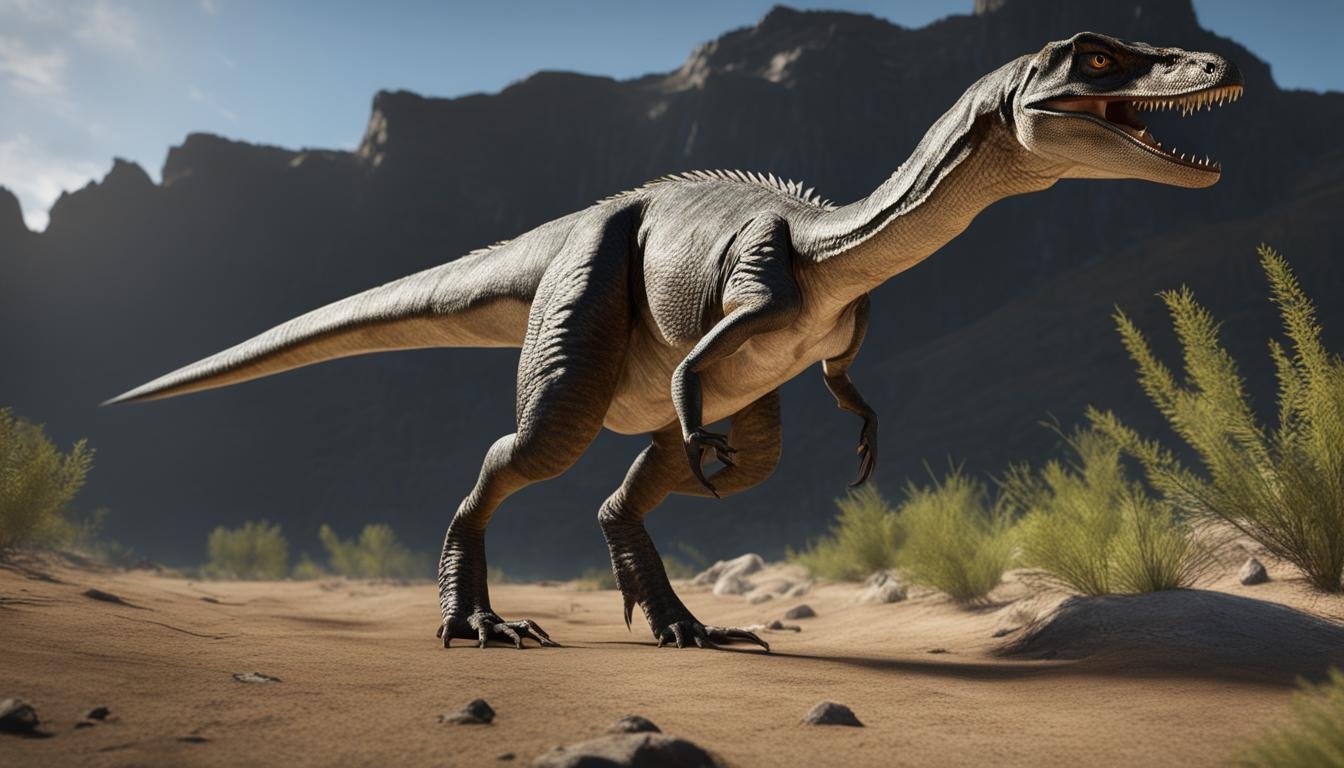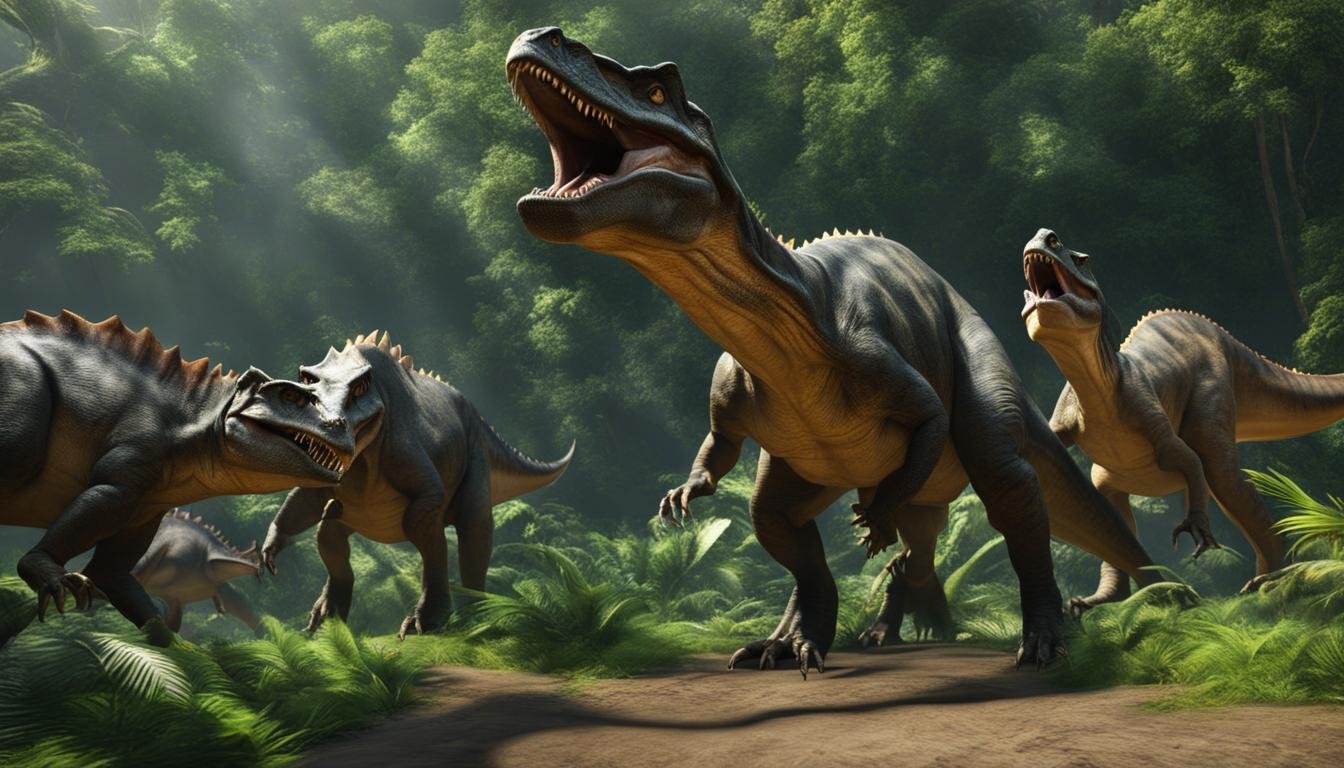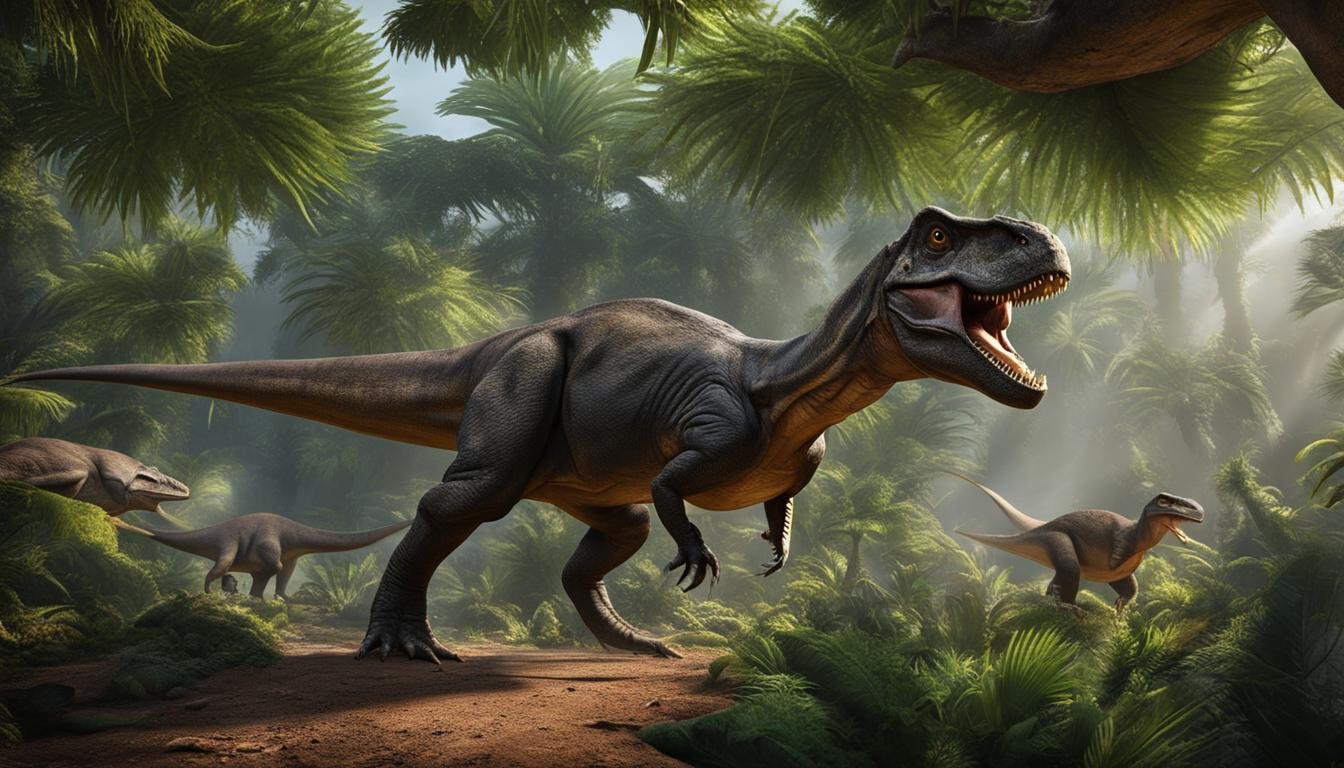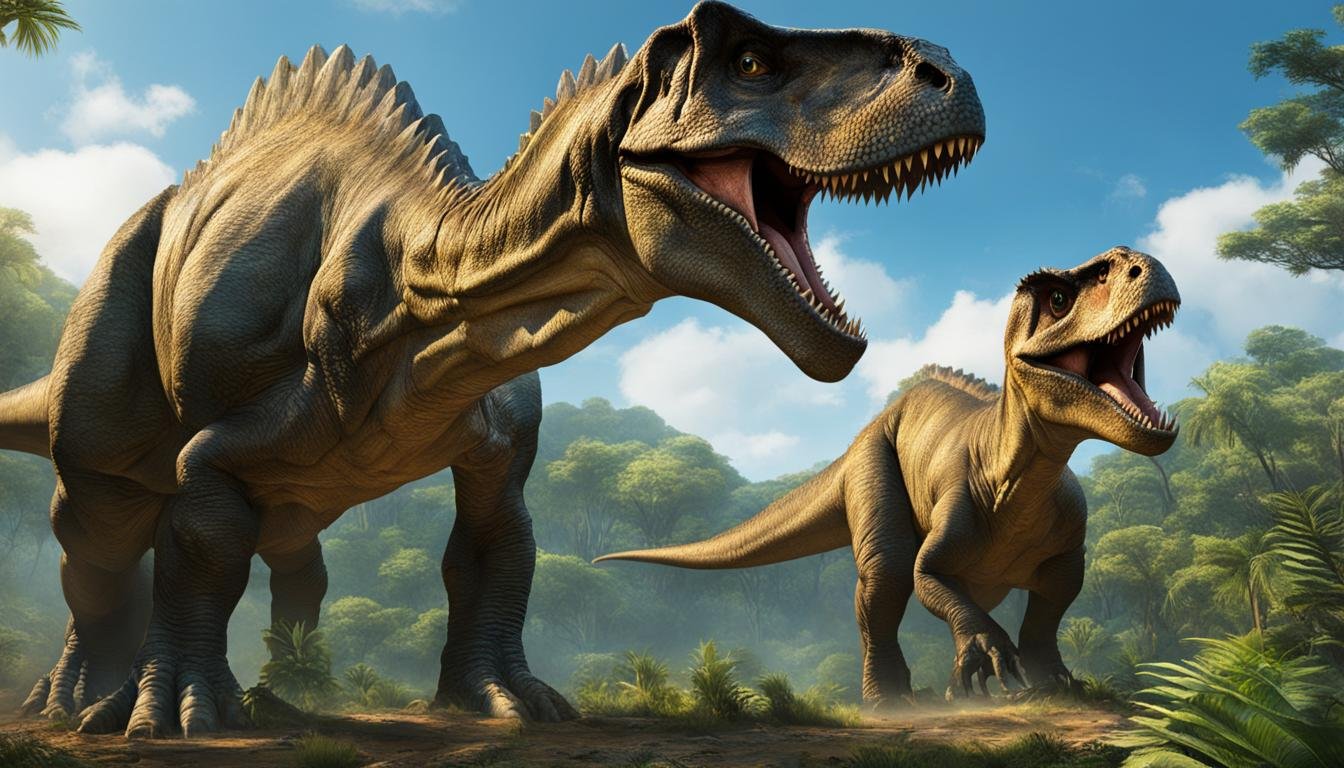Have you ever wondered how dinosaurs communicated with each other? Did they use sounds like modern animals or rely on visual displays? Let’s explore the fascinating world of dinosaur communication methods and uncover some intriguing insights.
Communication Evolution and Paleontological Findings
Understanding the evolution of dinosaur communication requires an examination of paleontological findings. These fossil records provide valuable insights into how dinosaurs used various methods to communicate with each other. By studying their physical characteristics and behaviors, researchers have gained a better understanding of dinosaur communication.
One of the key findings is the role of sound production in dinosaur communication. Specialized structures in the skulls of some dinosaurs, such as the hadrosaurs, indicate their ability to produce low-frequency sounds. These structures, combined with respiratory tracts, acted as resonating chambers, allowing dinosaurs to create unique vocalizations. This suggests that sound played a crucial role in conveying messages and signals among dinosaurs.
| Dinosaur Crest Displays | Sound Production | Body Language |
|---|---|---|
| Dinosaurs used ornamental structures like crests, frills, and horns to communicate messages. | Specialized structures in the skulls of some dinosaurs enabled them to produce low-frequency sounds. | Dinosaurs likely used body postures and movements to convey messages and intentions. |
| Examples: Parasaurolophus with its long, hollow crest that produced loud, resonating calls. | Examples: Hadrosaurs with specialized structures in their skulls for sound production. | Examples: Displaying dominance, readiness to mate, or threatening behavior. |
Furthermore, visual displays and body language were essential components of dinosaur communication. Ornamental structures like crests, frills, and horns were not only used for display purposes but also played a role in enhancing visual communication. By observing the behavior and physical characteristics of modern birds, researchers can make inferences about how dinosaurs used body language to interact and convey messages.
“Dinosaurs used ornamental structures like crests, frills, and horns to communicate messages.”
Overall, paleontological findings support the idea that dinosaur communication methods were diverse and complex. The presence of specialized structures for sound production, along with visual displays and body language, suggests that dinosaurs had sophisticated means of conveying information among themselves. These findings contribute to our understanding of dinosaur behavior and provide valuable insights into the ancient world of communication.
Vocalizations and Acoustic Ecology
Dinosaurs used vocalizations as a vital mode of communication. While we can’t precisely recreate the sounds they made, researchers believe that these species-specific noises served various purposes within their ecosystems. Territorial sounds could have been used to establish dominance and defend the boundaries of their territory, while distinctive mating calls likely played a role in attracting potential mates. Additionally, vocalizations may have served as predator alerts, warning other members of the group of potential danger.
Understanding the acoustic ecology of dinosaurs has also provided valuable insights into their communication methods. Acoustic ecology studies analyze the soundscape of ancient ecosystems, allowing researchers to infer the range and diversity of dinosaur vocalizations. By examining the frequency, pitch, and duration of vocalizations, scientists gain a better understanding of the social interactions and communication dynamics among different species of dinosaurs.
The study of dinosaur vocalizations and acoustic ecology is a fascinating field that continues to evolve. While dinosaur communication cannot be fully understood, research in this area provides valuable information about the behavior and social dynamics of these prehistoric creatures.
The Importance of Territorial Sounds
One particular aspect of dinosaur vocalizations is the use of territorial sounds. These sounds, produced by certain species of dinosaurs, may have been used to demarcate and defend their territory from other individuals. Similar to modern-day animals, territorial vocalizations would have served as a way for dinosaurs to establish dominance, communicate ownership, and maintain reproductive success within their group.
“Territorial sounds are crucial for maintaining the boundaries of a dinosaur’s territory and establishing dominance within their community.” – Dr. Laura Davis, Paleontologist
Further research in this area aims to unravel the specific vocalization patterns associated with territorial sounds, providing a deeper understanding of how dinosaurs communicated and interacted with one another.
Species-Specific Noises and Communication
Another intriguing aspect of dinosaur vocalizations is the presence of species-specific noises. Just as modern animals have their unique vocalizations, dinosaurs likely had distinctive sounds that set them apart from other species. These species-specific noises served as a means of communication, allowing dinosaurs to identify individuals from their own species and differentiate them from others.
- Dinosaur A: Deep, resonating calls
- Dinosaur B: High-pitched chirps
- Dinosaur C: Low-frequency rumbles
By analyzing the fossil evidence and comparing it with the vocalization patterns of modern-day animals, paleontologists can gain insights into the diversity of sounds produced by different dinosaur species. These findings contribute to our understanding of the intricate communication network that existed among dinosaurs.
| Dinosaur Species | Vocalization Type |
|---|---|
| Tyrannosaurus rex | Deep roars |
| Triceratops | Low-frequency rumbles |
| Hadrosaurus | Resonating calls |
Visual Communication and Non-Verbal Cues
Visual communication played a crucial role in dinosaur interactions. Just like modern animals, dinosaurs likely used body language and visual displays to convey messages and signals. The use of body postures, threatening displays, and courtship behaviors would have allowed dinosaurs to communicate dominance, readiness to mate, and intentions. Ornamental structures like crests, frills, and horns may have played a role in enhancing these visual displays. By observing the behavior and physical characteristics of modern birds, researchers can make inferences about how dinosaurs used visual communication to interact and communicate with others of their kind.
“Visual communication was a fundamental aspect of dinosaur behavior,” says Dr. Emma Johnson, a paleobiologist at Dino Research Institute. “Through non-verbal cues and body language, dinosaurs were able to convey important messages to their peers, such as establishing dominance or attracting a mate. These visual displays would have played a vital role in their social interactions and survival.”
One example of visual communication in dinosaurs is seen in the elaborate crests and frills of certain species. These structures, often adorned with vibrant colors and patterns, may have served as visual signals for courtship or display of dominance. Additionally, the size and shape of horns in species like Triceratops could have communicated aggression or defense. The ability to interpret these visual cues would have been crucial for dinosaurs in understanding the intentions and emotions of their fellow individuals.
Threat Displays and Courtship Behaviors
In addition to body language, dinosaurs may have employed specific threat displays and courtship behaviors to communicate important messages. Studies suggest that certain species, like the Dilophosaurus, may have used their prominent crests to intimidate rivals or signal their prowess during courtship rituals. These displays would have allowed for quick recognition of social status and helped establish hierarchies within dinosaur communities. The variety and complexity of these visual communication methods highlight the sophisticated social interactions that existed among different dinosaur species.

Examples of Dinosaur Visual Displays and Non-Verbal Cues
| Dinosaur Species | Visual Display or Non-Verbal Cue |
|---|---|
| Triceratops | Large, intimidating horns used for defense |
| Parasaurolophus | Crest used for species recognition and courtship |
| Stegosaurus | Threatening tail spikes for defense and courtship |
| Velociraptor | Feather display for communication within a pack |
The complexities and intricacies of dinosaur visual communication continue to fascinate researchers. By studying their body language, elaborate displays, and non-verbal cues, we gain valuable insights into the social dynamics and behaviors of these ancient creatures. Although we can only speculate about the specific meanings behind these visual signals, their importance in dinosaur societies cannot be understated.
Conclusion
Dinosaurs had a diverse range of communication methods, including vocalizations, visual displays, and non-verbal cues. Through fossil evidence and studies of modern animals, researchers have gained valuable insights into how dinosaurs may have used these methods for various purposes. Vocalizations likely played a significant role in establishing dominance, attracting mates, and warning others of potential danger.
Visual communication was also important for dinosaurs, with body language and visual displays conveying messages and intentions. Ornamental structures like crests, frills, and horns may have enhanced these visual displays, allowing dinosaurs to communicate dominance and readiness to mate. By studying the behavior of modern birds, researchers can make inferences about how dinosaurs used visual communication.
The evolution of dinosaur communication can be seen through the development of specialized structures, indicating the complexity and diversity of their communication methods. While the exact sounds dinosaurs made and the intricacies of their communication remain unknown, ongoing research continues to shed light on this fascinating aspect of their behavior. Understanding dinosaur communication methods adds to our overall understanding of their social interactions and contributes to the larger picture of these prehistoric creatures.








